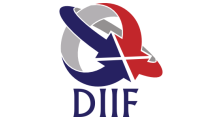Behavioural and neurochemical characterisation of the anxiolytic properties of an aqueous extract of Dysphania ambrosioides (L.) Mosyakin and Clemants (Chenopodiaceae) in experimental mice
DOI:
https://doi.org/10.30574/gscbps.2021.14.3.0078Keywords:
Dysphania ambrosioides, Anxiolytic, GABAergic, Brain, Folk medicineAbstract
Ethnopharmacological relevance: Dysphania ambrosioides (L.) Mosyakin & Clemants (Chenopodiaceae) is a medicinal plant known for its anxiolytic, antidepressant and anticonvulsant activities in Cameroonian folk medicine.
Aim of the study: The aim of this work is to evaluate the anxiolytic effects of Dysphania ambrosioides aqueous extracts and investigate its mechanism of action.
Materials and methods: Elevated plus maze test and open field test were used for detecting it anxiolytic properties. The possible mechanism of action of the aqueous extracts were investigated after pretreatment of animals with different antagonists of GABAA complex receptors (5 mg/kg N-methyl-β-carboline-3-carboxamide, 4 mg/kg flumazenil or 2 mg/kg bicuculline) 30 minutes prior to the oral administration of 370 mg/kg Dysphania ambrosioides aqueous extract.
Results: Dysphania ambrosioides increased the percentage of entries into and percentage of time in open arms, and reduced rearing, head dipping, and percentage of time in closed arms, in the elevated plus maze. It reduced rearing and defecation, and increased crossing, in the open field. In addition, anxiolytic-like properties of Dysphania ambrosioides were blocked by different antagonists of GABAA complex receptors (N-methyl-β-carboline-3-carboxamide, flumazenil or bicuculline) as examined in elevated plus maze test. Finally, the activity of GABA-T activity was inhibited and the brain GABA concentration was increased by the extracts, respectively.
Conclusion: These results suggest that Dysphania ambrosioides possess anxiolytic-like properties in mice that might involve an action on benzodiazepine and/or GABA sites in the GABAA receptor complex or by modulating brain GABA concentration in the central nervous system.
Metrics
References
De Hert M, Correll CU, Bobes J, Cetkovich-Bakmas M, Cohen D, Asai I, et al. Physical illness in patients with severe mental disorders. I. Prevalence, impact of medications and disparities in health care. World psychiatry. 2011; 10(1): 52.
Auerbach RP, Mortier P, Bruffaerts R, Alonso J, Benjet C, Cuijpers P, et al. WHO World Mental Health Surveys International College Student Project: Prevalence and distribution of mental disorders. Journal of abnormal psychology. 2018; 127(7): 623.
McKernan R, Rosahl T, Reynolds D, Sur C, Wafford K, Atack J, et al. Sedative but not anxiolytic properties of benzodiazepines are mediated by the GABA A receptor α 1 subtype. Nature neuroscience. 2000; 3(6): 587-92.
Cowley DS, Roy-Byrne PP, Radant A, Ritchie JC, Greenblatt DJ, Nemeroff CB, et al. Benzodiazepine sensitivity in panic disorder: effects of chronic alprazolam treatment. Neuropsychopharmacology. 1995; 12(2): 147-57.
Arbonnier M. Trees, shrubs and lianas in the dry zones of West Africa. Trees, shrubs and lianas in the dry zones of West Africa. 2000.
Adjanohoun J, Aboubakar N, Dramane K, Ebot M, Ekpere J, Enow-Orock E, et al. Traditional medicine and pharmacopoeia: contribution to ethnobotanical and floristic studies in Cameroon. Porto-Novo, Benin: CNPMS. 1996; 85.
Pousset J. Plantes médicinales africaines. Utilisation pratique. Agence de coopération culturelle et technique, (ACCT), Paris. 1989; 156.
Ngo Bum E, Soudi S, Ayissi E, Dong C, Lakoulo N, Maidawa F, et al. Anxiolytic activity evaluation of four medicinal plants from Cameroon. African Journal of Traditional, Complementary and Alternative Medicines. 2011; 8(5S).
Taiwe GS, Kouamou ALN, Ambassa ARM, Menanga JR, Tchoya TB, Dzeufiet PDD. Evidence for the involvement of the GABA-ergic pathway in the anticonvulsant activity of the roots bark aqueous extract of Anthocleista djalonensis A. Chev.(Loganiaceae). Journal of basic and clinical physiology and pharmacology. 2017; 28(5): 425-35.
Percie du Sert N, Hurst V, Ahluwalia A, Alam S, Avey MT, Baker M, et al. The ARRIVE guidelines 2.0: Updated guidelines for reporting animal research. Journal of Cerebral Blood Flow & Metabolism. 2020; 40(9): 1769-77.
Organization WH. General guidelines for methodologies on research and evaluation of traditional medicine. World Health Organization. 2000.
Bourin M, Dhonnchadha BdÁN, Colombel MC, Dib M, Hascoët M. Cyamemazine as an anxiolytic drug on the elevated plus maze and light/dark paradigm in mice. Behavioural brain research. 2001; 124(1): 87-95.
Lister RG. The use of a plus-maze to measure anxiety in the mouse. Psychopharmacology. 1987; 92(2): 180-5.
Ngo Bum E, Taïwe GS, Moto F, Ngoupaye G, Nkantchoua G, Pelanken M, et al. Anticonvulsant, anxiolytic, and sedative properties of the roots of Nauclea latifolia Smith in mice. Epilepsy & Behavior. 2009; 15(4): 434-40.
Taiwe GS, Bum EN, Talla E, Dimo T, Sidiki N, Dawe A, et al. Evaluation of antinociceptive effects of Crassocephalum bauchiense Hutch (Asteraceae) leaf extract in rodents. Journal of Ethnopharmacology. 2012; 141(1): 234-41.
Lowe IP, Robins E, Eyerman GS. The fluorimetric measurement of glutamic decarboxylase and its distribution in brain. Journal of neurochemistry. 1958; 3(1): 8-18.
Taiwe G, Bum E, Dimo T, Talla E, Weiss N, Dawe A, et al. Antidepressant, myorelaxant and anti-anxiety-like effects of Nauclea latifolia smith (Rubiaceae) roots extract in murine models. International journal of pharmacology. 2010; 6(4): 364-71.
Nayak P, Chatterjee A. Effects of aluminium exposure on brain glutamate and GABA systems: an experimental study in rats. Food and chemical toxicology. 2001; 39(12): 1285-9.
Sytinsky I, Guzikov B, Gomanko M, Eremin V, Konovalova N. The gamma‐aminobutyric acid (GABA) system in brain during acute and chronic ethanol intoxication. Journal of neurochemistry. 1975; 25(1): 43-8.
Taiwe G, Moto F, Pale S, Kandeda A, Dawe A, Kouemou N, et al. Extracts of Feretia apodanthera Del. demonstrated anticonvulsant activities against seizures induced by chemicals and maximal electroshock. Epilepsy research. 2016; 127: 30-9.
Bourin M. The test retest model of anxiety: an appraisal of findings to explain benzodiazepine tolerance. Pharmacology Biochemistry and Behavior. 2019; 178: 39-41.
Bourin M, Petit‐Demoulière B, Nic Dhonnchadha B, Hascöet M. Animal models of anxiety in mice. Fundamental & clinical pharmacology. 2007; 21(6): 567-74.
Moto FC, Arsa’a A, Ngoupaye GT, Taiwe GS, Njapdounke JS, Kandeda AK, et al. Anxiolytic and antiepileptic properties of the aqueous extract of Cissus quadrangularis (Vitaceae) in mice pilocarpine model of epilepsy. Frontiers in pharmacology. 2018; 9: 751.
Lister RG. Ethologically-based animal models of anxiety disorders. Pharmacology & therapeutics. 1990; 46(3): 321-40.
Rodgers R, Cao B-J, Dalvi A, Holmes A. Animal models of anxiety: an ethological perspective. Brazilian journal of medical and biological research. 1997; 30: 289-304.
Evans AK, Lowry CA. Pharmacology of the β‐Carboline FG‐7142, a Partial Inverse Agonist at the Benzodiazepine Allosteric Site of the GABAA Receptor: Neurochemical, Neurophysiological, and Behavioral Effects. CNS drug reviews. 2007; 13(4): 475-501.
Olsen R, DeLorey T. GABA synthesis, uptake and release. Basic Neurochemistry: Molecular, Cellular and Medical Aspects, 6th ed Philadelphia, USA: Lippincott-Raven. 1999.
Saad S. Administration of CNS depressant drugs like barbiturates, hydantoin and diazepam etc. can restore the isoniazid induced fall in brain GABA levels. J Pharm Pharmacol. 1972; 24: 839-40.
Taïwe GS, Bum EN, Talla E, Dawe A, Moto FCO, Ngoupaye GT, et al. Antipsychotic and sedative effects of the leaf extract of Crassocephalum bauchiense (Hutch.) Milne-Redh (Asteraceae) in rodents. Journal of ethnopharmacology. 2012; 143(1): 213-20.
Sherif FM, Ahmed SS. Basic aspects of GABA-transaminase in neuropsychiatric disorders. Clinical biochemistry. 1995; 28(2): 145-54.
Downloads
Published
How to Cite
Issue
Section
License

This work is licensed under a Creative Commons Attribution-NonCommercial-ShareAlike 4.0 International License.
















